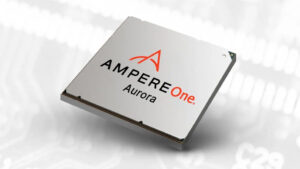China’s DeepSeek Unveils New Open-Source AI Following R1’s Challenge to OpenAI

DeepSeek Unveils Its Latest Language Model: Prover V2
Introduction to Prover V2
Chinese artificial intelligence firm DeepSeek has recently launched a new open-weight large language model (LLM) named Prover V2. This latest model was shared on Hugging Face, a platform that allows users to host and share models, on April 30. Released under the open-source MIT license, Prover V2 is designed specifically for verifying mathematical proofs.
Size and Capabilities of Prover V2
Prover V2 is a significant advancement over its earlier versions, Prover V1 and V1.5, which debuted in August 2024. Prover V2 boasts an impressive 671 billion parameters, making it much larger than its predecessors. The aim of this model is to convert problems from math competitions into formal logic, utilizing the Lean 4 programming language, a commonly used tool for theorem proving.
The developers of Prover V2 assert that it effectively compresses extensive mathematical knowledge into a format that can generate and verify proofs. This capability has the potential to benefit both research and educational sectors.
Understanding AI Models and Their Weights
In AI, the term "model" often refers to either a singular file or a collection of files that allow a user to run AI locally without depending on external servers. However, it’s important to know that the leading LLMs typically require advanced hardware, which most individuals do not have access to.
Prover V2, for instance, is around 650 gigabytes in size and necessitates substantial RAM or VRAM (GPU memory) to operate effectively. To achieve this size, the model’s weights were quantized to 8-bit floating-point precision, which means that each parameter now occupies half the space compared to the standard 16 bits, dramatically reducing the model’s size.
Previous Versions and Their Improvements
Prover V1 was based on the DeepSeekMath model, which featured seven billion parameters and was fine-tuned using synthetic data. This synthetic data is often produced by AI itself, as human-generated data is becoming increasingly scarce when it comes to higher quality standards.
Prover V1.5 enhanced its predecessor by optimizing both training and execution, resulting in improved accuracy in performance benchmarks. However, the specific advancements in Prover V2 remain ambiguous, as no detailed research paper or information outlining these improvements has been released yet.
It’s also worth mentioning that the parameter count of Prover V2 indicates its likely foundation in DeepSeek’s earlier R1 model. When R1 was launched, it generated significant interest due to its performance, which was competitive with OpenAI’s then-leading model, o1.
The Significance of Open Weights in AI
The public release of LLM weights raises a lot of discussion. On one hand, it democratizes access to AI, allowing users to leverage the technology independently of commercial server limitations. Conversely, this open access can lead to concerns about potential misuse, as companies are unable to implement restrictions on dangerous queries. The launch of R1, for example, sparked security debates, with some critics calling it China’s "Sputnik moment."
Supporters of open-source initiatives celebrated DeepSeek’s commitment to this model, especially as it follows the patterns set by Meta with its LLaMA series. This shows that open AI continues to play a significant role in the AI landscape, competing with more restricted systems.
Accessibility of Language Models
With advancements in AI development techniques, users can now operate LLMs locally without needing expensive supercomputer resources. Two key techniques driving this accessibility are model distillation and quantization.
Model distillation involves training a smaller “student” model to mimic the capabilities of a larger “teacher” model. This allows developers to maintain most performance levels while reducing the number of parameters, making it more viable for less powerful hardware. Quantization, on the other hand, reduces the numeric precision of a model’s parameters to minimize size and enhance processing speed, with a minor compromise in accuracy.
Prover V2 exemplifies this principle by reducing its data structure from 16-bit to 8-bit floating points. Further reductions are also possible. DeepSeek’s R1 model has already been distilled into various versions, from 70 billion parameters to as small as 1.5 billion, with some of the tiniest models capable of running on mobile devices.






